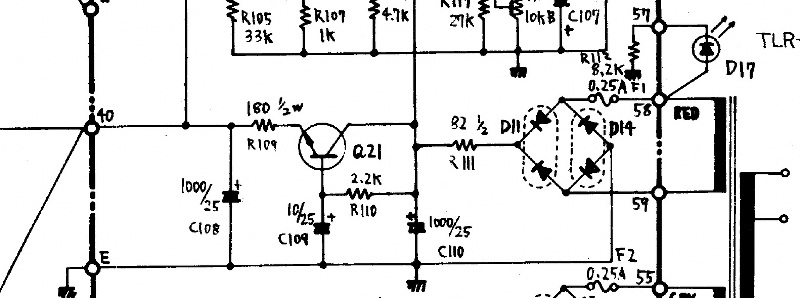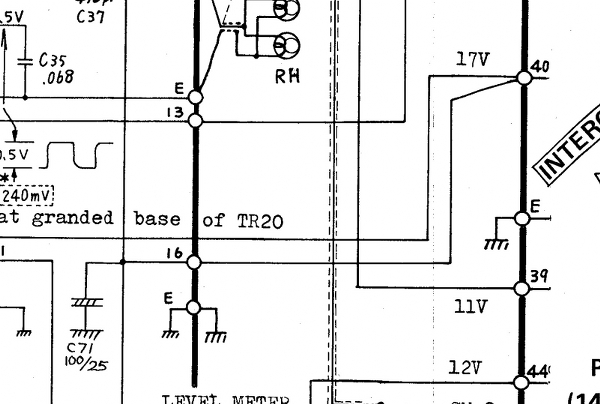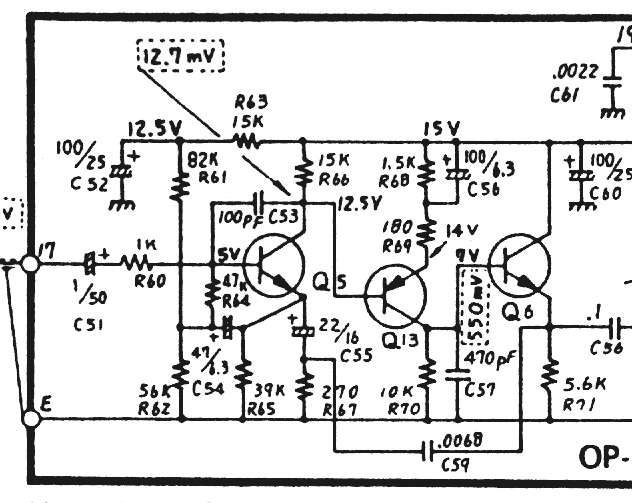I don't know if you need to increase the filter caps much. The caps were probably selected to be oversized in the first place to account for the usual wear. If you do increase them, don't do it by more than 30% or so because a) inrush currents might stress something else and b) it might take noticeably longer for the unit to turn off.
The only exception might be the motor PS filter cap. I changed mine from 1000u to 2200u because that cap gets punished pretty hard and I thought there was a little excessive warble in the motor (although I'm not sure if it had an effect - there still is some warble at low speeds and my motor is pretty solid - it spins freely and there's no "play" in the shaft).
Other than PSU filter caps, the next best place would be bypass caps around the high gain parts. In particular the recovery amp:
I would replace at least the 100u caps because any hum at the recovery amp input is going to be amplified by a lot.
ECHO VOLUME BOOST MOD:
As long as I have that graphic up I want to share a mod that I think is a no-brainer for a Space Echo:
In my RE-101, the Echo Volume would not exceed the volume of the original signal. I don't know if that's just how it's supposed to work or if it's because of head wear or whatever but the delayed echo was always a little quieter by a few dB. I verified this using an audio analyzer.
However, there is a super easy mod that allows you to boost the level of the delayed sig to be
louder than the non-delayed signal when the Echo Volume is at it's maximum position. I have mine modified so that when the Echo Volume is at 12 o'clock I get the unmodified behavior but at about 2 o'clock the levels are about the same and of course above that the delayed signal is actually is louder but about 4 dB.
This mod is an effect in itself. It really makes a difference with note doubling techniques in particular.
Anyway, the mod is very simple and it can be easily removed. All you have to do is piggy-back / tack on a 470 ohm resistor on top of the 270 ohm R67 in the above graphic. This changes that resistor from 270 ohms to 170 ohms (270||470) which equates to a 6dB boost in the recovery amp. This has no effect on DC bias of course because it's on the ground side of the bypass cap.
Note: Clean the existing resistor leads first with some flux. If they're covered in grime it may be hard to get the new resistor to stick.
Technically this does shift the HP frequency from 27 Hz to 42 Hz so you could change the bypass cap from 22u to 47u if you really wanted to be pedantic about it.But a little 6dB HP shelf is not necessarily bad. I think I kept the 22u. But you should put a fresh cap there regardless.








